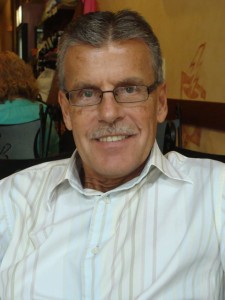Is your organizational performance lagging? When you floor the gas pedal does your organizational vehicle hesitate? Have you missed out on innovative or profitable opportunities because of what seems like lack of steam power? Perhaps it is time for an organizational Yin-Yang tune up.
Think of the human body for moment. How intricate and complicated it is, and how every functional part is critically important to day-to-day living. How the slightest issue or problem can wreak havoc physically as well as emotionally. How we tend to take the blessings of a healthy and fully functioning body for granted, and over time manages to treat it in such a way we create serious harm and even death. Solemn but all too often true.
In order for our body to function at its optimum level it must be in perfect balance. Just the slightest issue from hormones and chemicals to infections and diseases, will impact our performance from mild to significant based on the seriousness of the problem. A mild cold for example will slow you down and impair your thought processes. A sinus infection will significantly impact your overall performance whereas pneumonia will tend to place you flat on your back.
A sober fact is that in the United States over 30,000 people die every year from the common flu. These are individuals who are typically in a weakened state and simply cannot fight off the effects of something as mild as the flu. Millions survive the flu every year, yet thousands do not simply because their bodies are not in balance.
Organizations are no different.
For any organization to perform at its optimum level organizational balance must also exist. This is achieved when the needs and expectations of the business (hard side) are balanced with the needs and expectations of the people (soft side). While this type of balance may not be as intricate as with our own body, it is nonetheless equally important.
The needs and expectations of any business will include areas such as:
- Quality
- Efficiency
- Profitability
- Waste Minimization
- Workforce Attendance and Performance
On the other hand the needs and expectations of people will include such areas as:
- Respect and Dignity
- Valued and Appreciated
- Honesty and Integrity
- Safety and Security
- Competitive Pay and Benefits
If the needs and expectations of the business supersede those of the people, short-term bottom line performance may prevail. However, long-term performance will ultimately erode. By the same token if the needs and expectations of the people are placed ahead of the business a short-term positive environment may exist. However, it will give way to the erosion of competitiveness in the long-term thus placing the organization at substantial risk of sustainability. In the end when not in balance over the long-term, neither the business nor the people will ultimately achieve their desired needs and expectations.
Even in very difficult times as recently experienced, organizational balance can still be achieved. However, far too often organizations when faced with a difficult business climate make short-term decisions without taking into consideration the impact on organizational balance. This is not to suggest that difficult decisions are not necessary and in some cases essential to organizational survival. This is the harsh reality of business. However, consistently treating people with respect and dignity and demonstrating through words and actions that they are truly valued and appreciated does not have to exist only in good times. In fact such an environment is even more critical during challenging times.
By the same token, when the people of an organization fail to respect and value the importance of achieving the business side needs and expectations, organizational balance is equally impacted to the ultimate detriment of the very same people. By example this is typically cited as the single major issue when there is a competitive disadvantage between a union operation versus one that is non-union. Whenever sides are taken, organizational balance becomes the victim and long-term performance the loser.
30,000 people in the United States die every year due to their inability to fight off the common flu. Numerous organizations likewise perish every year due to their inability to fight off increasing competition in an ever increasingly harsh business climate.
As we all too often take our personal health for granted and even fail to respect our own bodies, so to do many organizations. Success breeds complacency, and complacency creates a “take it for granted” environment that derails organizational balance. A critical role for HR in any organization is to serve as the fulcrum in organizational balance. They must therefore clearly understand the business side as well as have a firm grasp on the needs and expectations of the people.
Like our own bodies, to ensure true organizational balance exists a periodic check-up is required where needs and expectations are clarified and evaluated. Once this process is completed and the true honest results revealed they must be openly communicated. Actionable plans must then be created and effectively implemented. However, to avoid a false sense of wellbeing true organizational honesty and support must exist. Otherwise the true health condition will be masked ultimately leading to an organizational weakened state.
Latest posts by Tim Garrett (see all)
- Develop Your Leadership to Be Talent Keepers - November 28, 2022
- Retention Vs. Recruitment: The Revolving Employment Door Dilemma - January 15, 2019
- Union Jujitsu: How to Leverage Union Strategy to Beat It at Its Own Game - September 11, 2011












